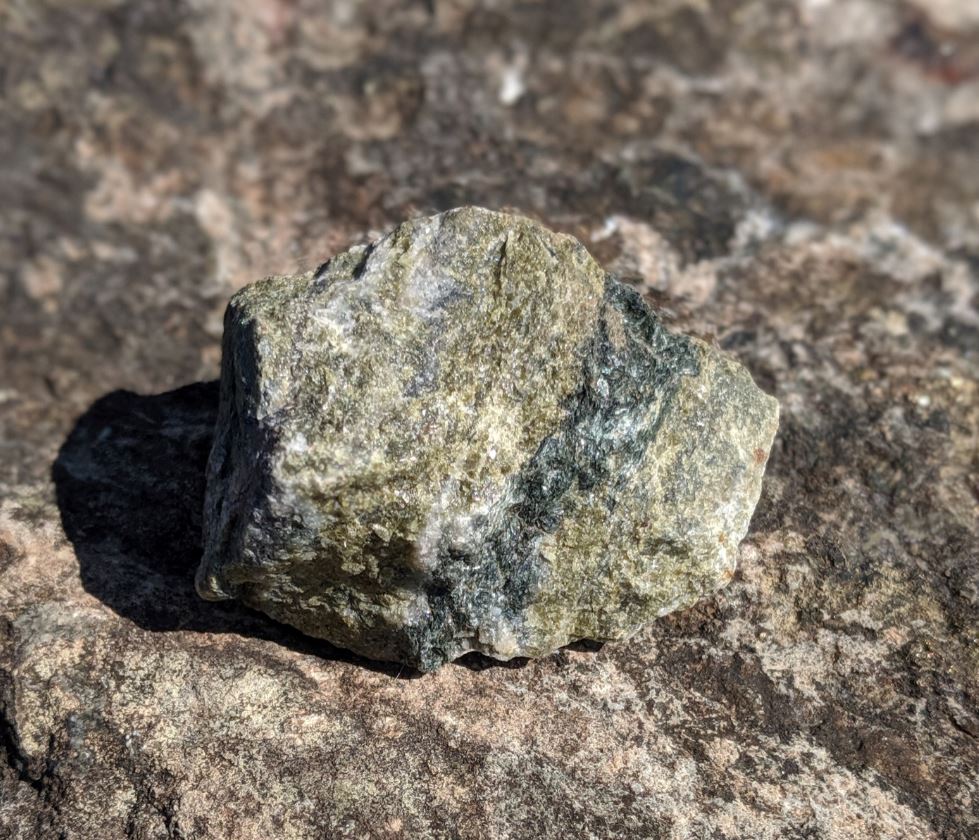
Skarn
Skarn (shown above) is the name for marble which has been altered by hot mineral-rich fluids, often associated with the intrusion of an igneous body. The change in chemistry that these fluids undergo as they encounter the calcium carbonate of the marble causes vaulable metals to precipitate in high concentrations. The mineral of primary interest here is magnetite.
Tailings
Tailings are the waste rock left over after the valuable minerals are separated out.
The Paleozoic Platform
Between about 500 million years ago and 350 million years ago, central North America was a low-relief surface located variably at or below sea level. Shallow seas covered the continent and sedimentary rocks were deposited in layers upon the ancient Precambrian basement. This fairly flat-lying stack of rocks is known as the Paleozoic Platform.
Iron and Steel
Iron is the main component of steel and was in hgh demand by the manufacturing and automotive industries. The process of making steel involves adding carbon to iron.
Magnetic Ore
The target ore at Marmora was iron, held in the mineral magnetite, so named because it is magnetic. Magnetite stringers occur as an alteration mineral in Precambrian marbles.
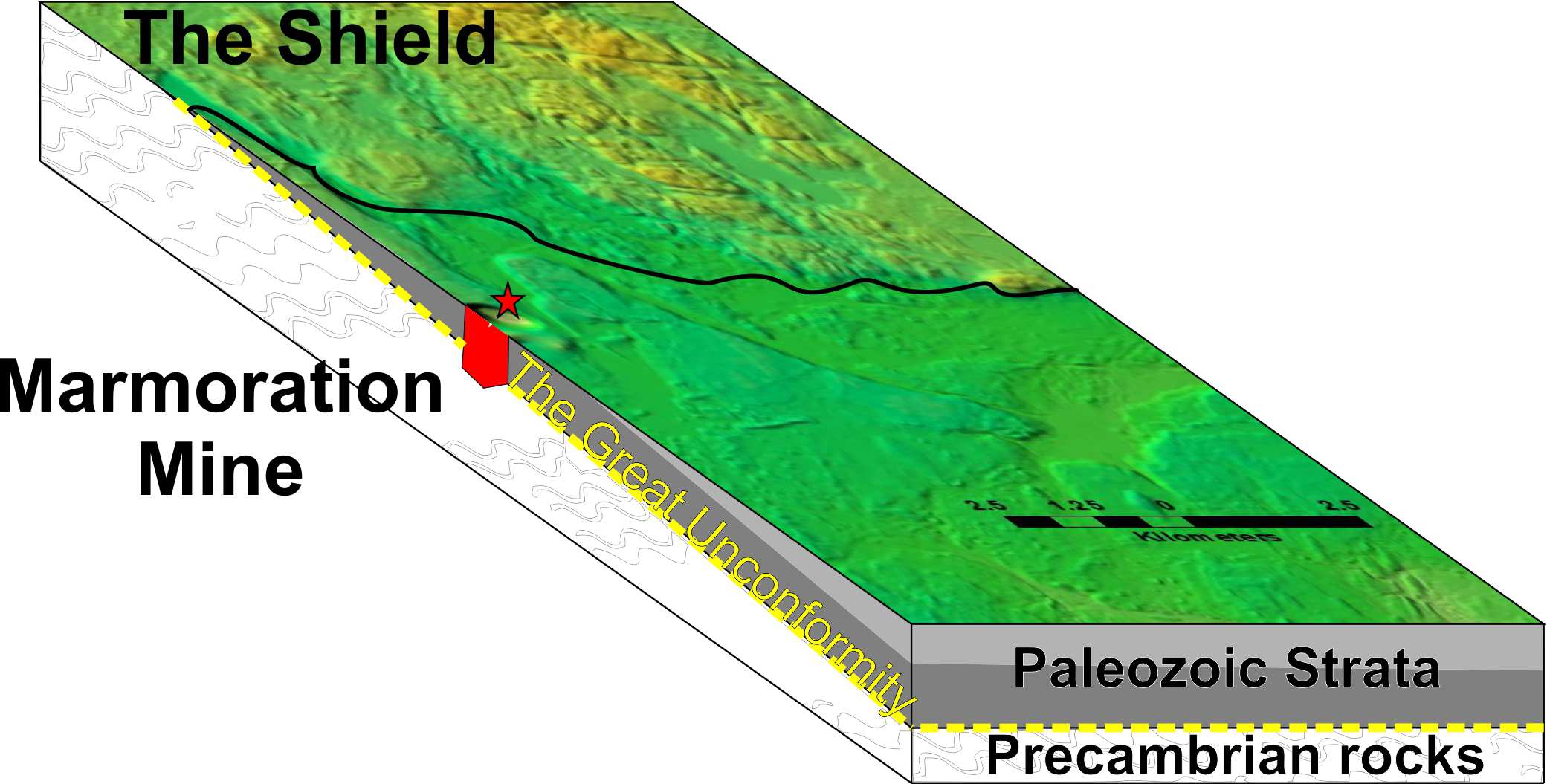
Caprock
The ore was buried deep underground, covered by essentially worthless caprock, some one hundred feet thick. 22 million tons of limestone had to be stripped before the real mining could begin.
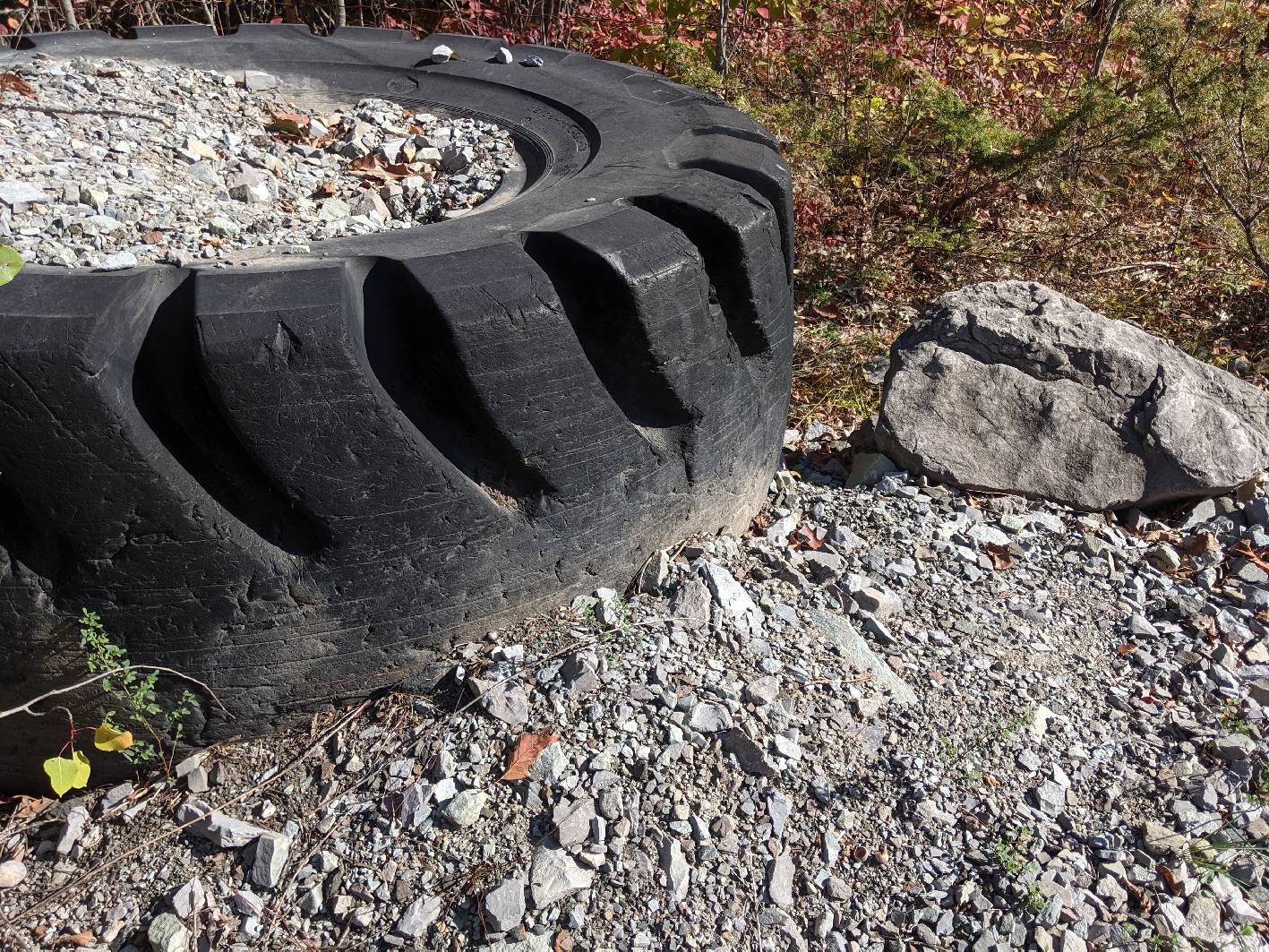
Tires
The tires lining the path are from heavy duty mining vehicles. Rough terrain and heavy loads meant that tires needed to be replaced often.
Marmora
The township of Marmora is named after the Latin word for marble, a common rock type in the area.
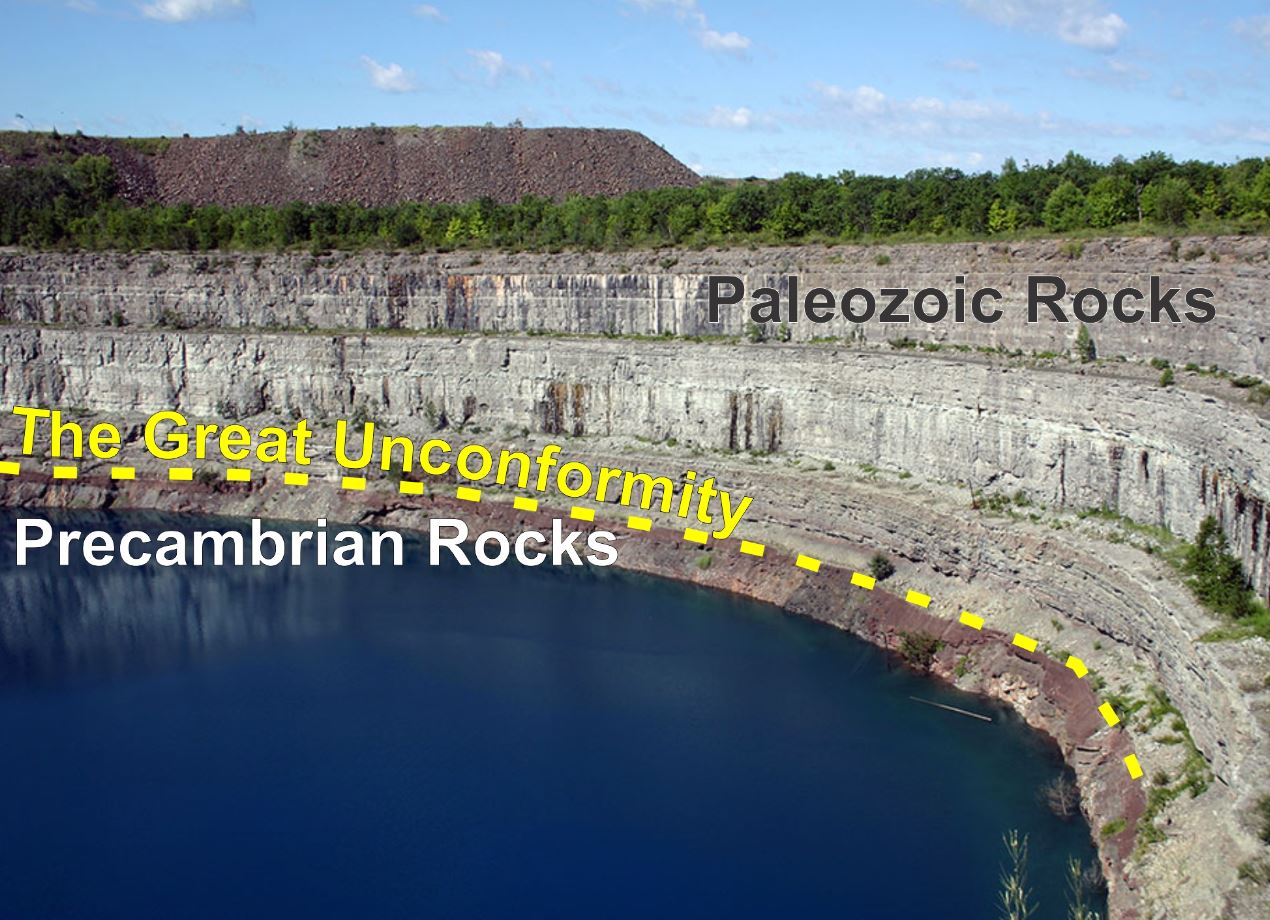
The Great Unconformity
An unconformity is a break in time between two layers of rocks and usually represents a long period of erosion. The Great Unconformity divides Precambrian Shield rocks from Paleozoic sedimentary strata. When the Marmoration Mine was still active, one could see the Great Unconformity at the very bottom of the pit, but raising water level have since covered it up.
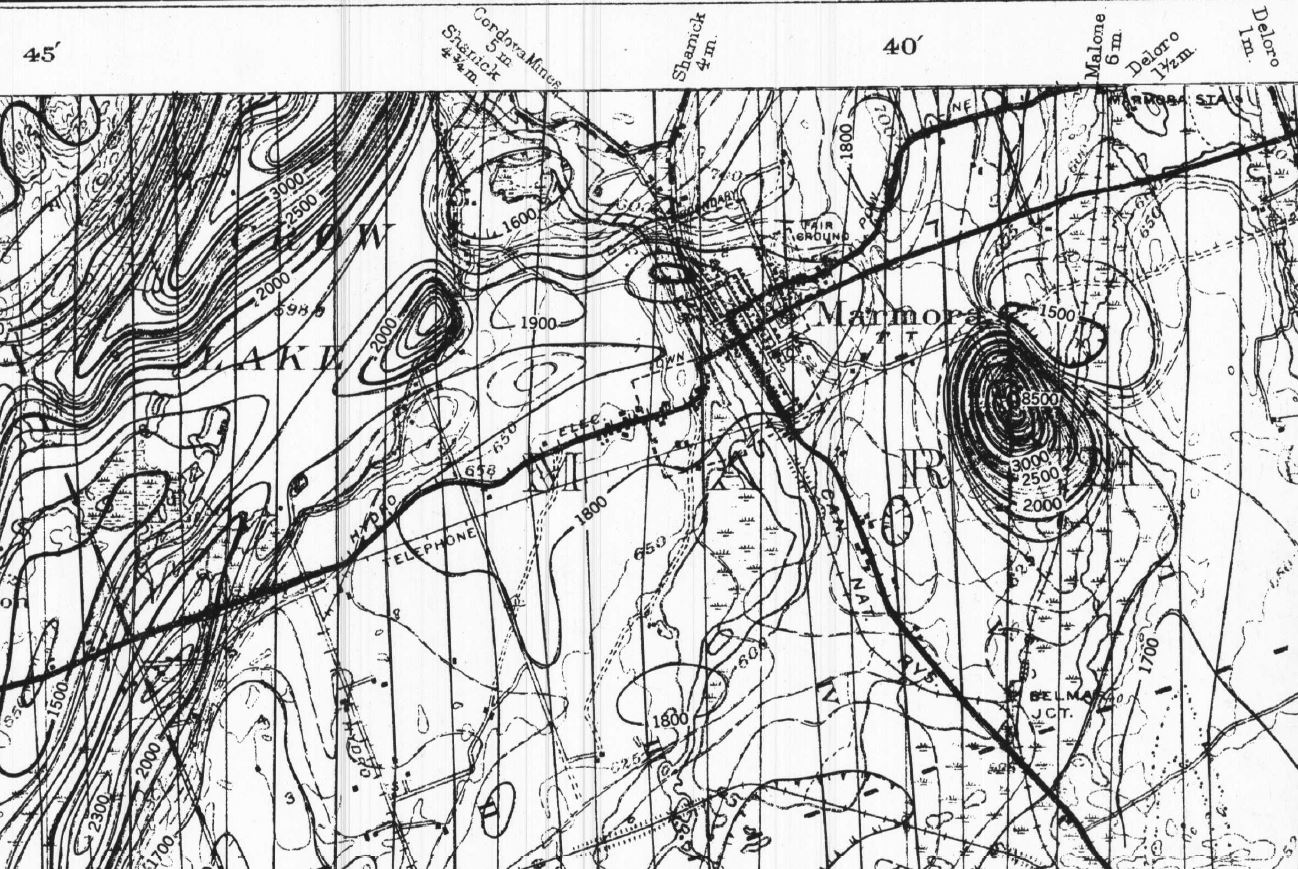
An Aeromagnetic Discovovery
Interest in discovering new iron resources surged in the aftermath of World War Two. In January 1949, a strong magnetic anomaly was detected in an aeromagenetic survey near the town of Marmora. Further exploration led ot the discovery of a giant iron ore body.
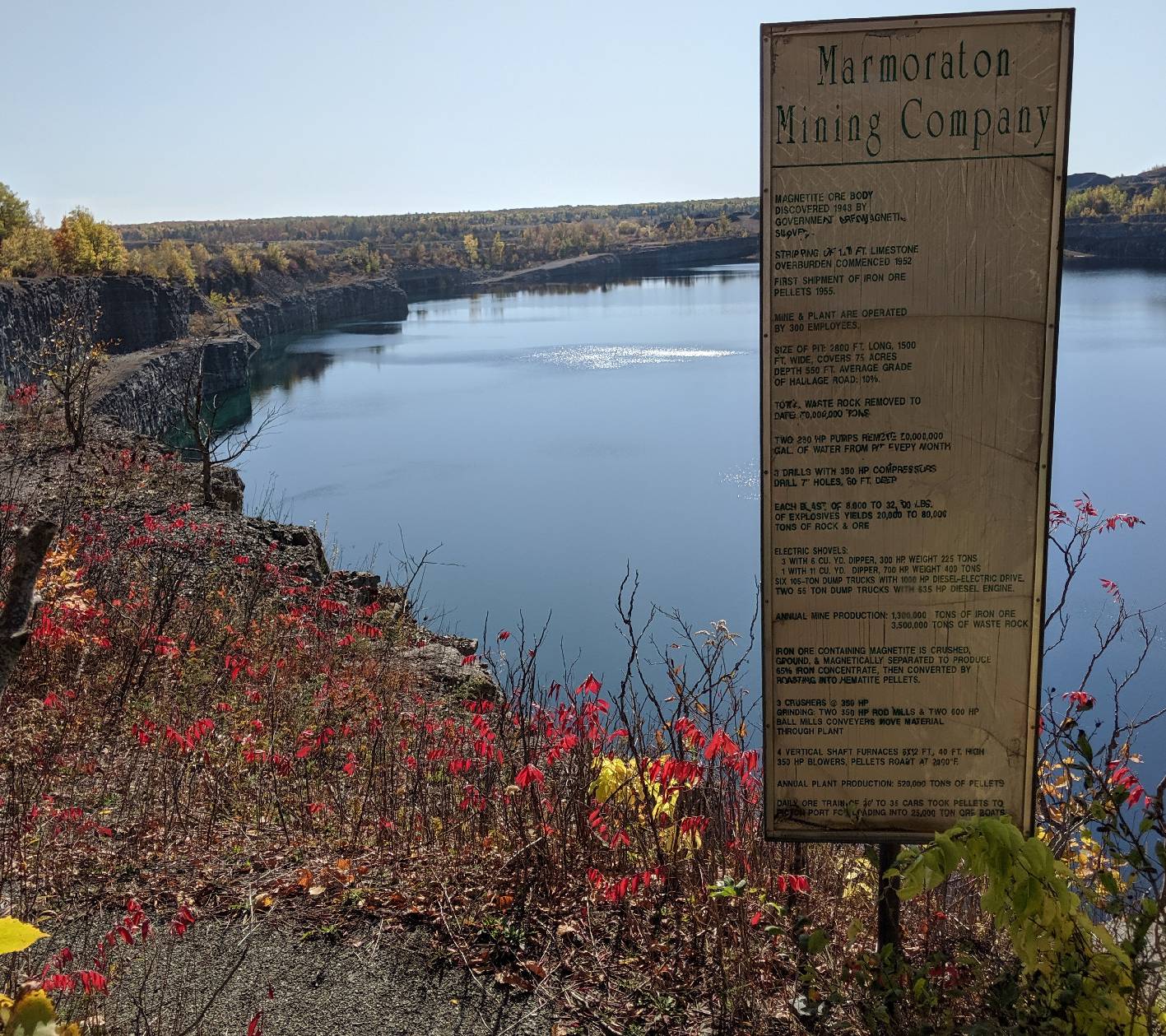
An American Venture
The mine was operated by Bethlehem Steel Mills, an American steel and shipbuilding company. Ore was exported to Buffalo for further processing.
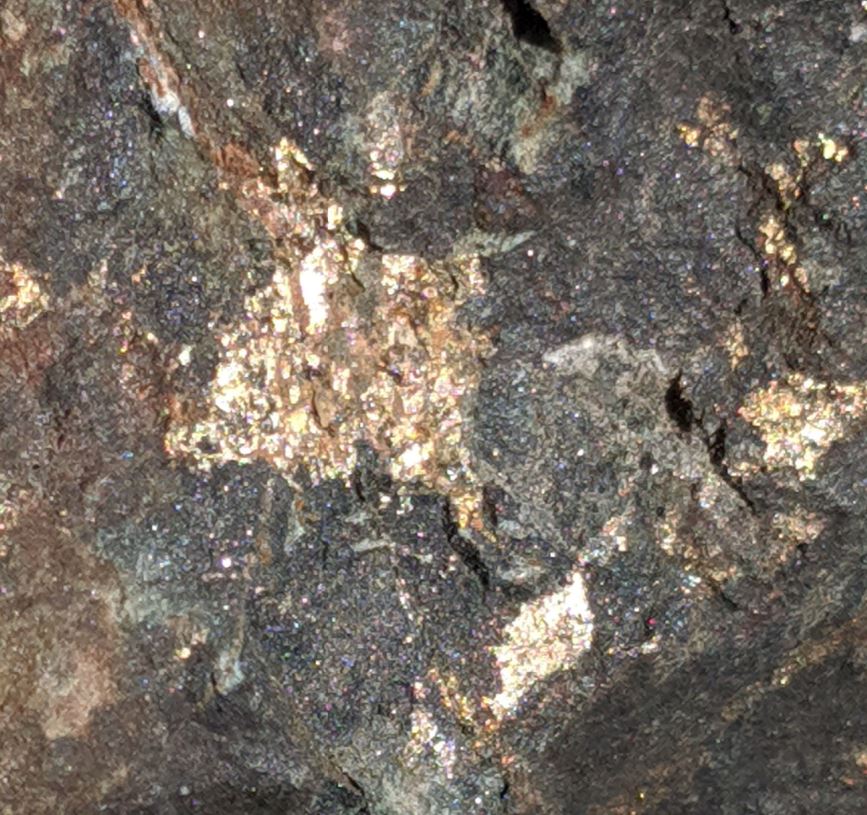
Sulphide Minerals
A variety of shiny and metallic sulphide minerals can be found while looking through the tailings, including magnetite, andradite, chalcopyrite (shown here), chlorite, epidote, goethite, hornblende, pyrite, pyrrhotite, serpentine, sphalerite, and sphene.
Exploration
Betweem 1950-1951, the Bethlehem Steel Corp drilled 40 diamond drill holes to define the ore body, based of the aeromagnetic data.
Canadian Shield
Below this water exists the buried Canadian Shield. This part was formed about 1.8 billion years ago during the Grenville Orogeny when the coast of North America was squeezed into a large mountain belt.
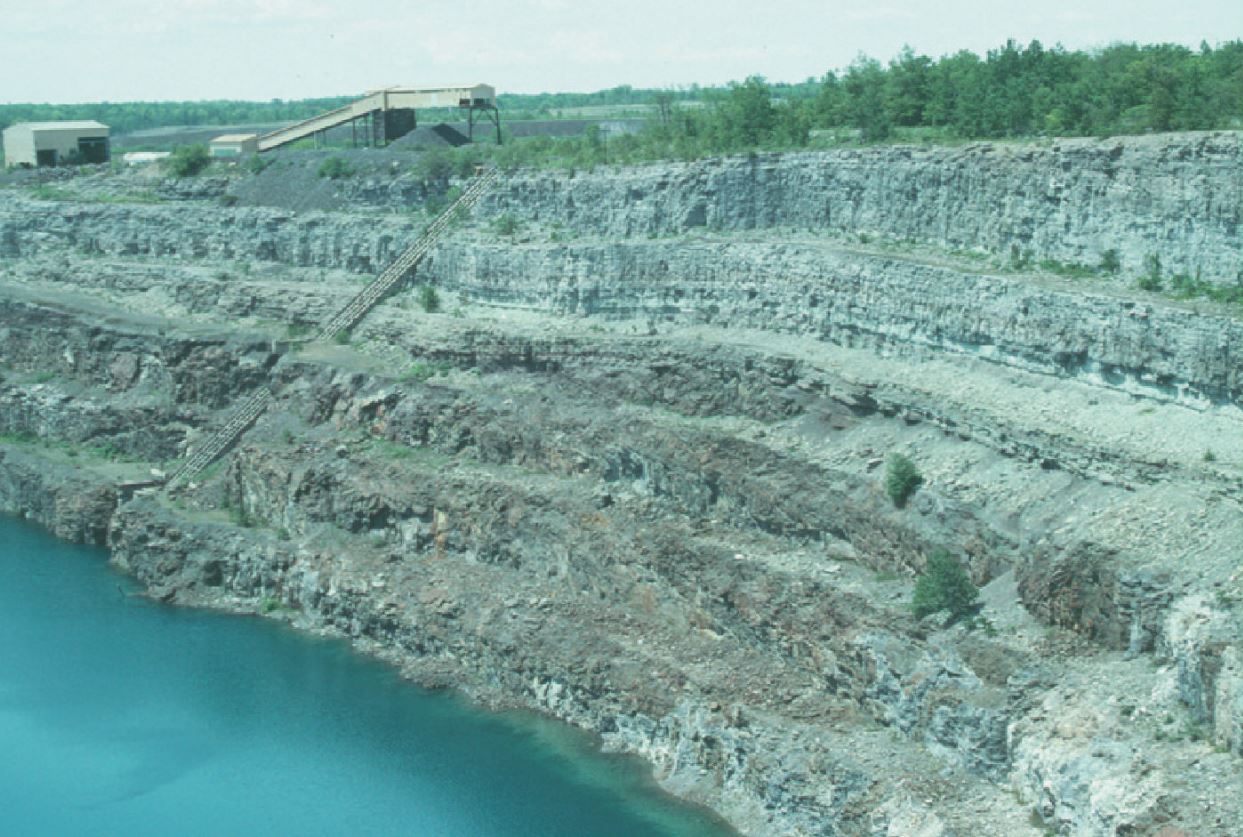
1978 Closure
Finally, in 1978, the mine was no longer profitable and closed down. Three hundred jobs were lost. By the time of it's closure, it had mined almost 1.3 million tons of iron ore.
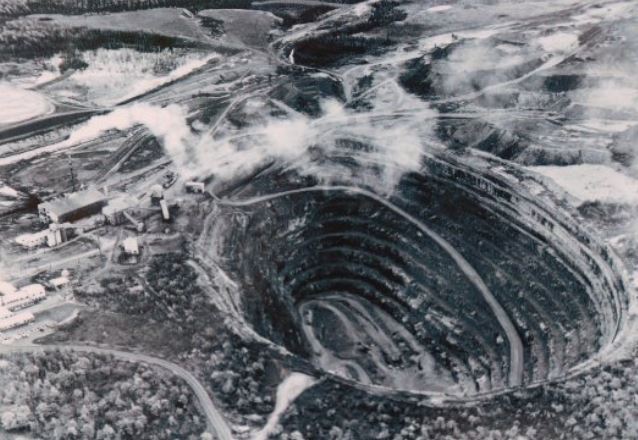
A Big Pit
The question of what to do with this site lingers on. It has slowly filled with water to become a lake, fenced off from the public except for a viewing platform. Could it be used for waste storage? Hydro generation? Time will tell.
The 1970's Slowdown
In the late nineteen seventies, iron production slowed, largely because of the shutdown of the American steel industry and shift to importing steel-based manufactored goods like vehicles from foreign countries.







